Expert Guide: How to Effectively Unclog a Blocked Toilet at Home
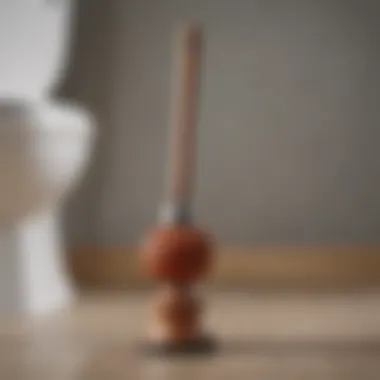
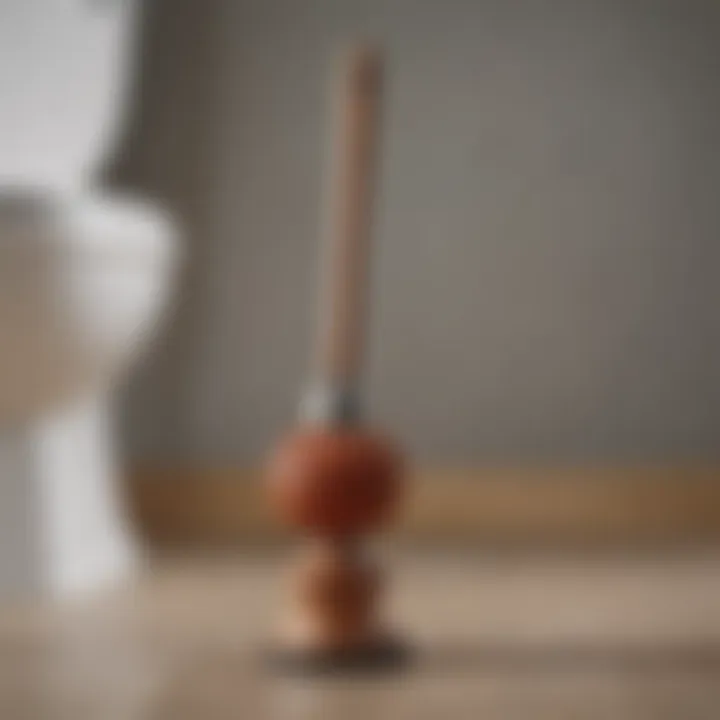
Inspiring Homes
Are you tired of dealing with a blocked toilet? Well, that's something most homeowners face at some point. Worry not, as we delve into a comprehensive guide on how to effectively unclog a blocked toilet. From understanding the common reasons behind blockages to the step-by-step solutions that can help you resolve this pesky household issue, we've got you covered.
Let's kick things off by shedding light on the primary culprits responsible for a blocked toilet. Often, the usual suspects include excessive toilet paper usage, flushing non-flushable items like wipes or sanitary products, or even mineral build-up in older plumbing systems. By grasping the root cause, you'll be better equipped to tackle the blockage head-on.
Now, let's get into the nitty-gritty of solving this problem. One effective approach is using a plunger - a ubiquitous tool found in most households. By creating a vacuum seal and using firm pressure, you can dislodge the blockage and restore proper flow. Alternatively, if the plunger doesn't do the trick, a plumbing snake or auger can help break up more stubborn clogs lurking deeper in the pipes.
Once you've successfully unclogged the toilet, it's essential to take preventive measures to avoid future blockages. Simple practices like using less toilet paper per flush, installing a drain guard to catch debris, or periodically using a plumbing-friendly cleaner can significantly reduce the likelihood of facing this issue again.
Section 1: Understanding Blocked Toilets
Understanding the intricacies of a blocked toilet is paramount in dealing with this common household inconvenience efficiently. By comprehending the underlying causes and signs, one can tackle the issue effectively. From excessive toilet paper usage, flushed foreign objects to the build-up of mineral deposits, various factors contribute to toilet blockages that require immediate attention. A thorough understanding of these elements aids in implementing appropriate solutions.
Causes of Toilet Blockages
Excessive Toilet Paper Usage
Excessive toilet paper usage is a common culprit behind toilet blockages. When an abundance of toilet paper is flushed down the drain, it can lead to clogs and drainage issues. Despite its importance in maintaining hygiene, excessive use of toilet paper can overwhelm the plumbing system, causing blockages that impede proper toilet function. Although toilet paper is a necessity, responsible usage is vital to prevent blockages.
Flushed Foreign Objects
Another significant cause of toilet blockages is flushed foreign objects. Items such as wipes, sanitary products, and other non-biodegradable materials can obstruct the toilet pipes, leading to blockages and potential damage to the plumbing system. While it may seem convenient to flush various items down the toilet, it is essential to adhere to proper disposal practices to avoid costly repairs and inconveniences.
Build-up of Mineral Deposits
The build-up of mineral deposits within the toilet pipes can also contribute to blockages. Over time, minerals from hard water can accumulate inside the pipes, restricting water flow and causing blockages. This phenomenon is particularly common in areas with hard water, emphasizing the need for regular maintenance and preventative measures. Addressing mineral deposits promptly can help prevent severe blockages and extend the lifespan of the plumbing system.
Signs of a Blocked Toilet


Waste Water Rising
One of the key indicators of a blocked toilet is waste water rising in the bowl. When flushing the toilet results in water levels rising instead of draining, it signifies a potential blockage in the pipes. Ignoring this sign can lead to overflow and water damage, underscoring the importance of addressing the issue promptly. Detecting waste water rising early enables homeowners to take preventive measures and avoid extensive plumbing repairs.
Slow Draining Toilet
A slow-draining toilet is another common indication of a blockage in the plumbing system. When water takes longer than usual to drain from the toilet bowl, it suggests a partial obstruction hindering proper flow. This gradual drainage can be frustrating and unsanitary, prompting the need for swift action to unclog the toilet and restore normal function. Recognizing the signs of a slow-draining toilet allows individuals to intervene before the blockage worsens.
Gurgling Sounds
Unusual gurgling sounds emanating from the toilet or drain pipes serve as a warning sign of potential blockages. These sounds occur when air trapped in the plumbing system escapes through the water, indicating an underlying issue such as a blockage or improper ventilation. Gurgling noises should not be ignored, as they point to an imminent or existing blockage that requires immediate attention. Identifying and addressing gurgling sounds early can prevent further complications and ensure the smooth operation of the toilet.
Tools and Equipment Needed
In the realm of unblocking toilets, having the right tools and equipment is paramount to success. These items not only facilitate the unclogging process but also ensure a hygienic and efficient resolution. Among the essential tools required are the plunger, toilet auger, and rubber gloves. The plunger, a common household tool, is versatile and effective in dislodging benign blockages. Its suction power creates pressure that can help clear minor obstructions. The toilet auger, on the other hand, is ideal for more stubborn clogs deeper within the plumbing system. Its extended reach and spiral design enable it to break through tougher blockages. Lastly, wearing rubber gloves is imperative to maintain cleanliness and protect your hands from coming into contact with wastewater and debris. These gloves also provide a secure grip when handling tools and materials, enhancing safety and sanitation.
Plunger
The plunger is a fundamental tool in unclogging toilets due to its simplicity and effectiveness. Its design comprises a rubber cup attached to a handle, creating a seal around the drain opening. By generating pressure through vertical movements, the plunger can dislodge blockages and restore proper water flow. When using a plunger, ensure a tight seal is formed over the drain to maximize suction. Additionally, employing strong and consistent thrusts can aid in breaking up clogs. Remember to clean the plunger after use to prevent the spread of bacteria and contaminants.
Toilet Auger
A toilet auger, also known as a plumbing snake, is a specialized tool designed to tackle more challenging toilet blockages. Featuring a long, flexible shaft with a corkscrew-like tip, the auger can reach obstructions deep within the pipes. To use a toilet auger effectively, insert the tip into the drain and rotate the handle to navigate through the clog. The twisting action helps dislodge debris, allowing for smoother waste passage. Exercise caution to avoid damaging the porcelain of the toilet bowl while operating the auger. After use, sanitize the auger and avoid cross-contamination with other surfaces.
Rubber Gloves
Rubber gloves are indispensable when dealing with toilet blockages for several reasons. Firstly, they serve as a hygienic barrier between your skin and potentially harmful waste materials. Opt for durable gloves that provide adequate protection against chemicals and bacteria. Additionally, wearing gloves enhances your grip on tools and handles, reducing the risk of accidents or slippage. Always wash and disinfect rubber gloves after handling sewage to prevent contamination. Remember to store gloves in a designated area away from other personal items to maintain hygiene standards.
DIY Solutions for Unclogging a Toilet
In this crucial section of the comprehensive guide on unclogging a blocked toilet, we delve into the importance of DIY solutions. Tackling a toilet blockage promptly and efficiently is vital for any homeowner, and understanding the intricacies of DIY methods can be a game-changer in such situations.
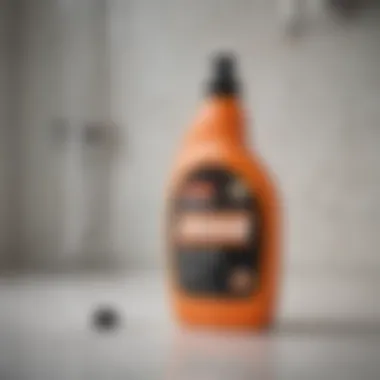
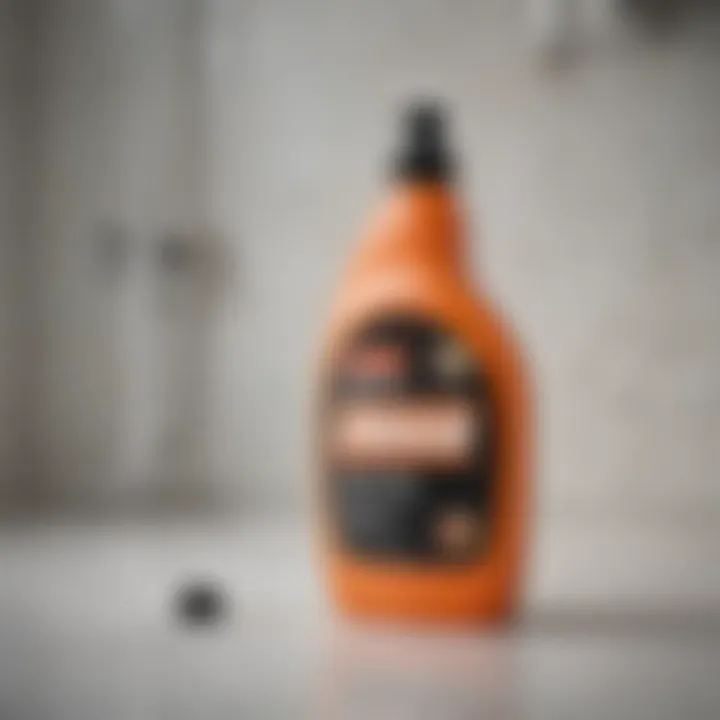
DIY solutions empower individuals to take matters into their own hands, potentially saving time and money that would have been expended on professional assistance. While plumbers are experts in their field, minor toilet clogs can often be resolved using DIY techniques. This section aims to equip readers with the necessary knowledge and skills to address common toilet blockages effectively without relying on external help.
When it comes to DIY solutions for unclogging a toilet, several key elements merit consideration. Firstly, the accessibility and ease of use of DIY methods make them appealing to individuals looking for immediate resolutions without scheduling appointments or incurring service charges. Secondly, DIY solutions allow homeowners to maintain a sense of independence and control over their living spaces, promoting a proactive approach to household maintenance. Additionally, utilizing DIY techniques fosters a sense of accomplishment and self-reliance when successfully clearing a toilet blockage, enhancing one's problem-solving abilities and confidence in handling similar issues in the future.
Using a Plunger
One of the most commonly employed tools for unclogging toilets is the trusty plunger. This section delves into the intricacies of using a plunger effectively to tackle toilet blockages with precision. When faced with a clogged toilet, the plunging technique can work wonders in dislodging obstructions within the pipe system.
To begin the process, ensure that the plunger's rubber cup creates a tight seal around the drain opening. next, using a rhythmic up-and-down motion, apply firm pressure to create suction and dislodge the blockage. It is crucial to maintain a steady pace and pressure while plunging to avoid splashing or causing further blockages.
A successful plunge is evidenced by the toilet water draining rapidly, signaling the clearance of the clog. However, if initial attempts prove unsuccessful, reposition the plunger and continue plunging until the blockage is resolved. Finally, flush the toilet to confirm the effectiveness of the plunging method, ensuring proper drainage and functionality.
Employing a Toilet Auger
When traditional plunging methods fall short in resolving a stubborn toilet blockage, the intervention of a toilet auger becomes necessary. This section sheds light on the process of employing a toilet auger to navigate through the pipe system and eliminate persistent obstructions.
A toilet auger, also known as a plumbing snake, features a long, flexible cable with a corkscrew-like tip designed to break through tough clogs. By inserting the auger into the toilet's drain opening and rotating the handle clockwise, the corkscrew tip advances through the pipes, hooking onto and removing the blockage.
It is essential to exercise caution and patience while using a toilet auger, as improper handling can damage the porcelain surface of the toilet. Additionally, wearing protective gloves is advisable to maintain hygiene and prevent any contamination during the unclogging process. Once the auger has successfully cleared the blockage, flush the toilet to verify smooth drainage and optimal functionality.
Homemade Drain Cleaners
In instances where mechanical tools are not readily available, homemade drain cleaners offer a natural and cost-effective solution for unclogging toilets. This section explores the utilization of household ingredients to create effective drain-cleaning concoctions that can dissolve blockages and restore drainage flow.
A common homemade drain cleaner involves combining equal parts of baking soda and vinegar to create a foaming reaction that breaks down organic matter causing blockages. Pour this mixture into the toilet's drain and allow it to sit for a period before flushing with hot water.
Alternatively, a mixture of hot water and dish soap can also be effective in dislodging softer clogs and maintaining the cleanliness of drain pipes. By utilizing these homemade drain cleaners regularly, homeowners can prevent the accumulation of debris and maintain the smooth operation of their toilet systems, promoting longevity and efficiency.
Professional Assistance for Stubborn Blockages
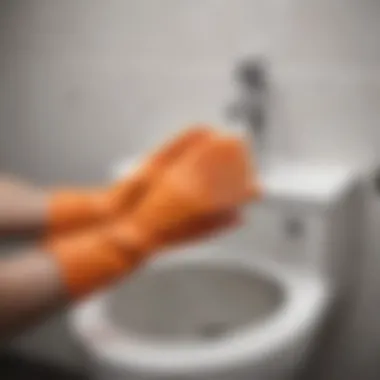

In the realm of toilet blockages, some situations may be beyond the average individual's capability to resolve adequately. This is where the necessity of seeking professional assistance for stubborn blockages becomes evident. Professional plumbers and drain cleaning services possess the expertise, tools, and experience required to tackle complex or persistent toilet clogs efficiently. By enlisting their services, homeowners can ensure that the underlying issue causing the blockage is identified and rectified proficiently.
When faced with a persistent toilet blockage that resists conventional DIY methods, turning to a qualified plumber can save both time and frustration. Plumbers are trained to assess the root cause of a blockage, whether it is due to a structural issue within the plumbing system or an obstruction deep within the pipes. Their specialized knowledge allows for a targeted and effective approach to unclogging toilets, restoring normal functionality promptly.
Moreover, the proficiency of professional drain cleaning services is invaluable when dealing with stubborn blockages. These experts utilize advanced tools such as high-pressure water jets and specialized drain snakes to dislodge and remove stubborn blockages that ordinary plungers or augers may not be able to eradicate. Their in-depth understanding of plumbing systems enables them to navigate intricate piping networks and dislodge blockages without causing damage to the pipes.
Engaging professional assistance for persistent toilet blockages offers homeowners peace of mind, knowing that the issue will be resolved thoroughly and without causing further harm to the plumbing infrastructure. While DIY solutions have their place, complex blockages often require the intervention of trained professionals to ensure a lasting and effective resolution.
Calling a Plumber
When facing a stubborn toilet blockage that resists all attempts at unclogging, it may be time to consider calling a plumber. Professional plumbers are equipped with the necessary tools and expertise to diagnose and resolve complex plumbing issues efficiently. Upon contacting a plumber, it is essential to provide details regarding the symptoms observed, such as water backup, slow drainage, or unusual noises, to aid in the accurate assessment of the problem.
Upon arrival, the plumber will conduct a thorough inspection of the toilet and associated plumbing system to identify the root cause of the blockage. By utilizing specialized equipment such as drain cameras, they can pinpoint the exact location and nature of the obstruction, allowing for a targeted approach to resolving the issue. Based on their assessment, the plumber will recommend the most appropriate course of action to unclog the toilet effectively.
Plumbers possess the expertise to address not only the immediate blockage but also any underlying issues within the plumbing system that may contribute to recurrent blockages. By entrusting the task to a qualified plumber, homeowners can rest assured that the problem will be addressed comprehensively, restoring the toilet's functionality without the risk of further complications.
Seeking Drain Cleaning Services
In situations where conventional methods fail to clear a stubborn toilet blockage, seeking professional drain cleaning services can provide an effective solution. These specialized services are designed to tackle complex blockages that are resistant to traditional unclogging techniques. Drain cleaning experts utilize a range of advanced tools and techniques to dislodge and remove stubborn obstructions, restoring proper drainage and preventing future blockages.
Upon engaging drain cleaning services, trained technicians will assess the severity and nature of the blockage, determining the most appropriate approach for remediation. By employing techniques such as hydro jetting, which uses pressurized water to break up clogs, and drain snaking to physically remove blockages, these professionals can eliminate even the most stubborn obstructions within the plumbing system.
Furthermore, drain cleaning services offer the benefit of thorough pipeline inspection, allowing for the identification of potential issues that may lead to future blockages. By addressing these underlying concerns, homeowners can prevent recurrent toilet blockages and maintain the optimal function of their plumbing system. Seeking professional drain cleaning services ensures a comprehensive and effective solution to stubborn toilet blockages, providing long-lasting results and peace of mind for homeowners.
Preventive Measures for Future Blockages
In the realm of toilet maintenance, the significance of implementing preventive measures for future blockages cannot be overstated. By taking a proactive approach to toilet care, individuals can avoid the inconvenience and potential water damage resulting from blocked toilets. Preventive measures act as a shield against unexpected disruptions in daily routines, ensuring a smoothly functioning plumbing system. One of the primary benefits of incorporating preventive measures is the cost savings associated with avoiding costly repairs or emergency plumbing services. Moreover, by adhering to preventive techniques, one can contribute to environmental conservation by reducing water wastage and minimizing the need for harsh chemical drain cleaners.
When contemplating preventive measures for future blockages, several crucial elements come into play. Firstly, adopting proper waste disposal practices is paramount. This involves being mindful of what gets flushed down the toilet and educating household members on the appropriate items to dispose of through alternative means. Implementing a bin in the bathroom for disposing of non-flushable items can go a long way in preventing obstructions in the plumbing system. Furthermore, regular maintenance checks play a key role in identifying and addressing potential issues before they escalate into major blockages. By scheduling periodic inspections, individuals can detect early warning signs of blockages such as slow drainage or unusual sounds, enabling timely intervention to prevent a complete toilet stoppage.
Proper Waste Disposal
Proper waste disposal is a critical aspect of maintaining a healthy and functional plumbing system. When it comes to toilets, knowing what should and should not be flushed is essential in preventing blockages and ensuring smooth operation. Non-biodegradable items such as hygiene products, paper towels, and grease should never be disposed of in the toilet as they can accumulate in the pipes and lead to clogs. Proper waste disposal also encompasses avoiding excessive use of toilet paper, which can clump together and obstruct the pipes. By practicing responsible waste disposal habits, individuals can significantly reduce the risk of toilet blockages and prolong the lifespan of their plumbing infrastructure.
Regular Maintenance Checks
Conducting regular maintenance checks on your toilet system is a proactive strategy to prevent unexpected blockages and plumbing issues. By routinely inspecting the toilet, including the flushing mechanism, water flow, and drainage, individuals can identify early warning signs of potential blockages or leaks. It is advisable to check for any leaks around the base of the toilet, as this could indicate a faulty seal or wax ring that may lead to water seepage and subsequent blockages. Additionally, observing the water level in the tank and listening for gurgling sounds during flushing can help in diagnosing underlying problems before they worsen. Regular maintenance checks not only help in ensuring the efficient performance of your toilet but also extend the lifespan of the plumbing fixtures, saving you both time and money on repairs in the long run.



